Best guitar amps under $500 2025: Premium tones from budget-friendly amplifiers
Who said great tone has to cost an arm and a leg? These amps from Boss, Marshall, Fender, Blackstar, and more deliver incredible sound – all for under $500
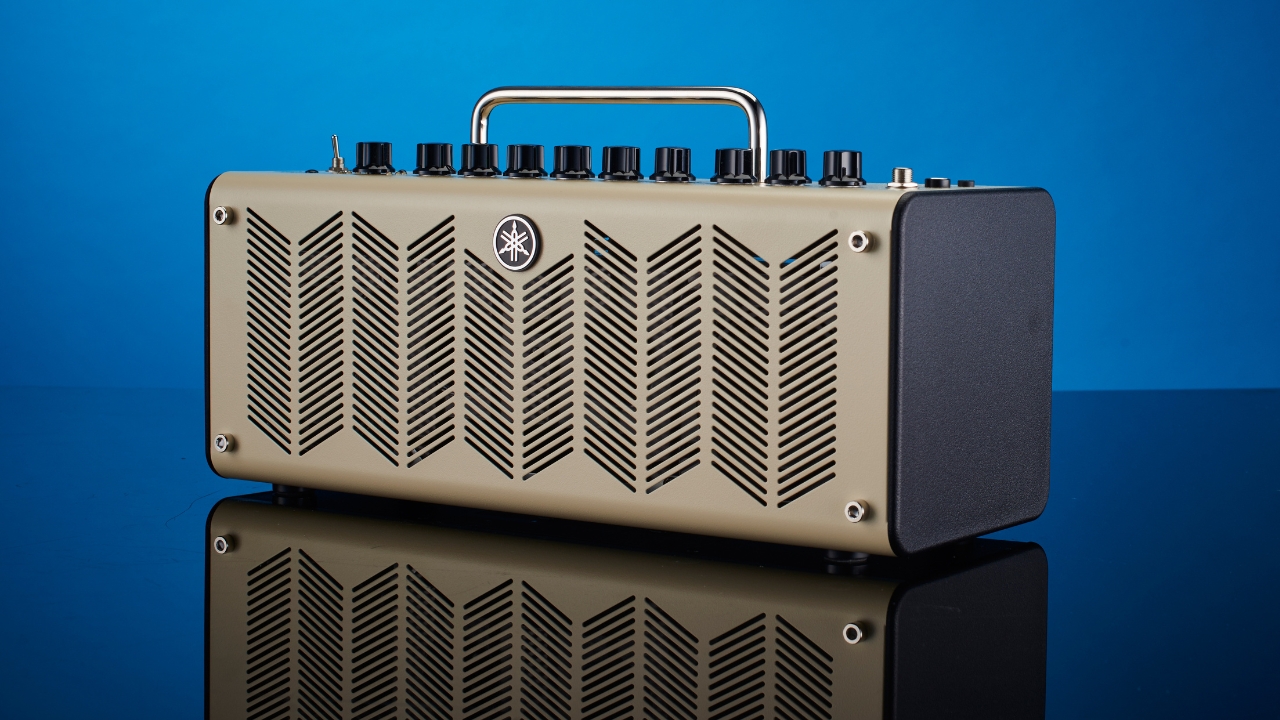
Once upon a time, the best tone came with a hefty price tag. But times have changed. Thanks to advancements in technology, the line between affordable and high-end gear has blurred. While boutique amps priced in the thousands still have their charm, some of the best guitar amps under $500 deliver surprisingly close results – without breaking the bank.
With amazing options from brands like Yamaha, Fender, and Marshall, spending a little less on your amplifier in no way means sacrificing good guitar tone. There are even giggable options from brands like Boss and Bugera that fall into this price bracket. So if you’re after a reliable workhorse, you might not have to spend as much as you originally thought. However, since your amplifier is a core aspect of your rig, it’s important to choose wisely.
Whether you're after both solid-state and tube amps, no matter which side of the fence you fall upon, your needs will be met here. If you're new to guitar amps or you just want to do a little more research, in addition to our product recommendations we've included some frequently asked questions at the bottom of the guide, too.
Our top picks
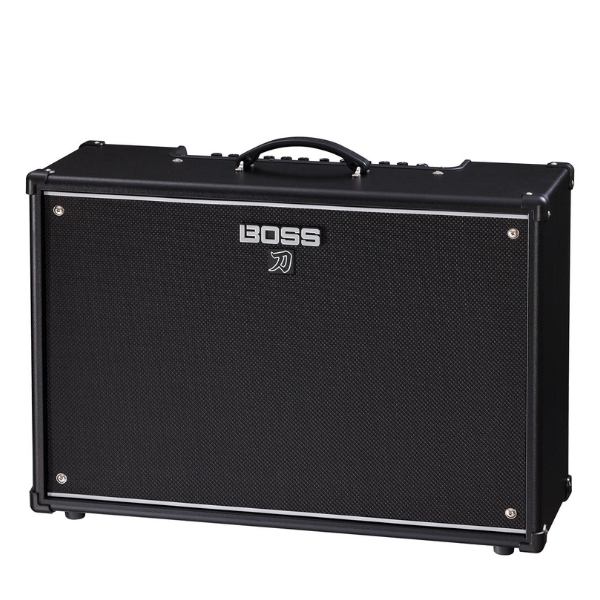
The Boss Katana 2x12 just got even more powerful with Gen 3. Packing 100 watts of tone with a brand new amp model, an array of effects make this a lot of amp for below the $500 mark.
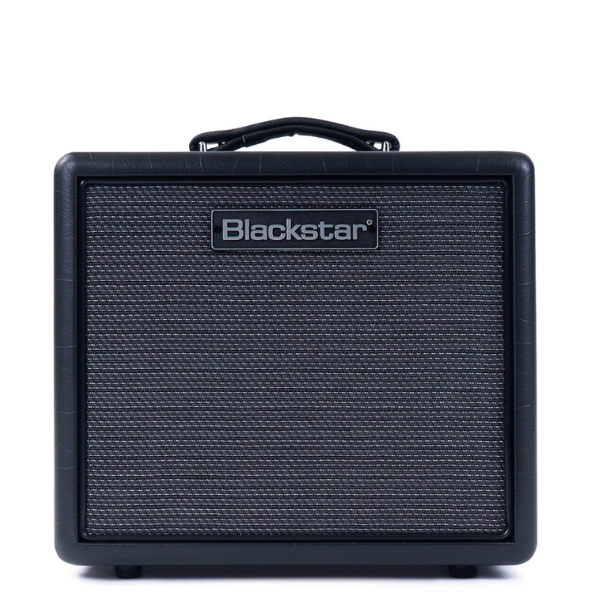
If you want a good tube amp that won't break the bank or annoy the neighbors, the Blackstar HT-1R packs a gorgeous tone into a compact and excellent value-for-money chassis.
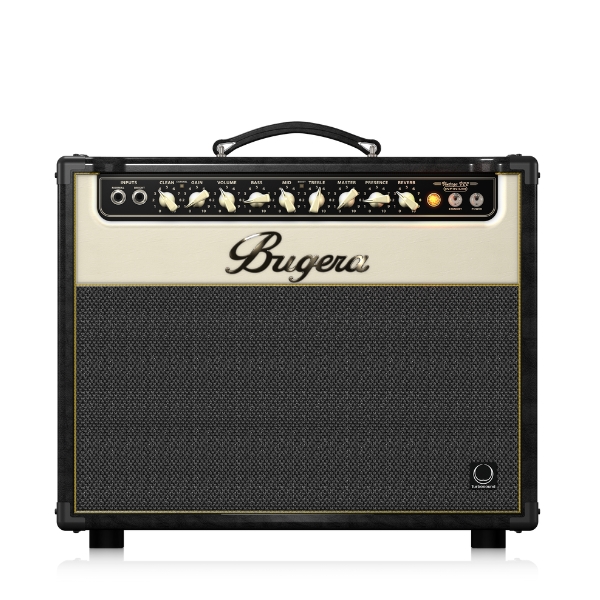
If you want a tube combo on a tight budget, the Bugera V22 Infinium is an outstanding value proposition that delivers on both tonal versatility and usability.
Best overall
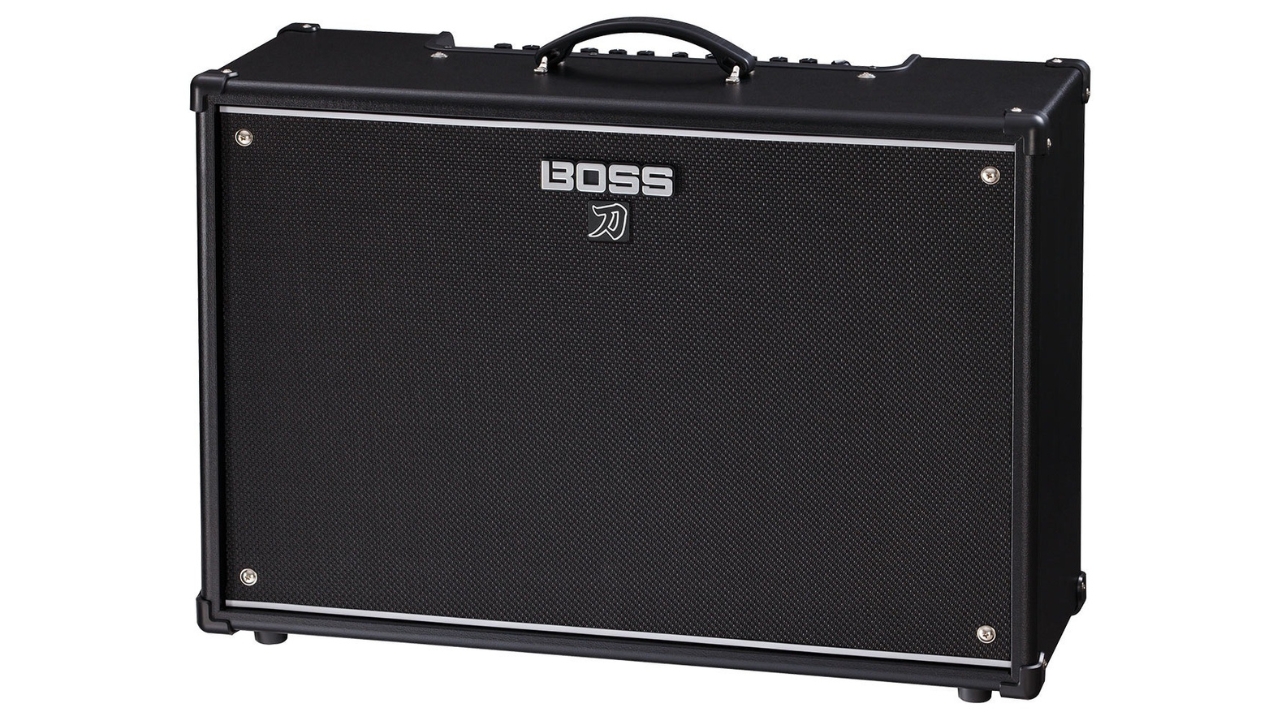
1. Boss Katana-100/212 Gen 3
Our expert review:
Specifications
Reasons to buy
Reasons to avoid
The Boss Katana Gen 3 2x12 is the latest iteration of a modern classic. The previous generation topped many of the best guitar amp lists for good reason, and this time around we’re expecting the Gen 3 to achieve the same. It packs a myriad of amp tones, from clean to high gain, realistically recreated with a full suite of Boss’ studio-quality effects.
The clean tones are pristine and clear, reacting beautifully to single coils without a hint of thinness. Cranking the gain you get everything from a pleasing Plexi-style crunch to all-out metal distortion. New to the Gen 3 Katana range is the ‘pushed’ amp type, and boy does it sing. It’s incredibly dynamic, and it nails the edge-of-break-up tone that so many guitarists flock after.
The ability to run five effects at once means you can craft a set of very specific sounds, saving them in four preset slots for instant recall. A line out for recording and a power amp input round out this adaptable amp’s immense feature set.
Best tube amp
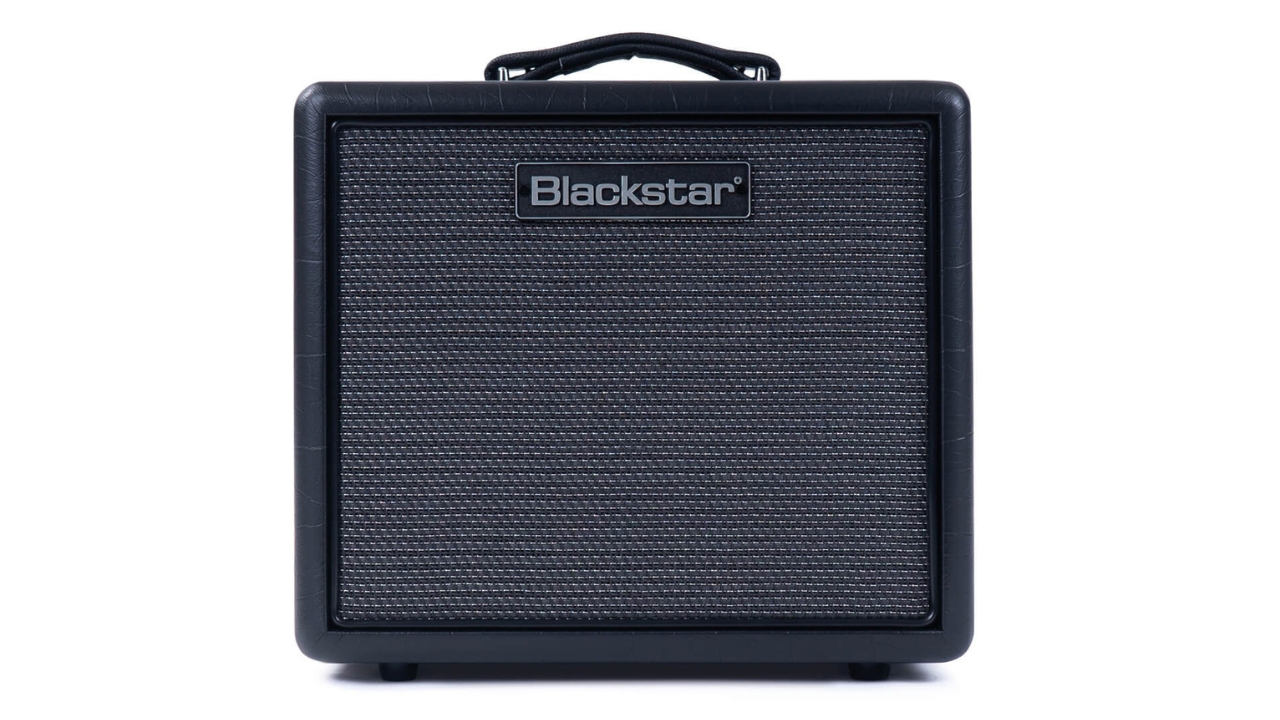
2. Blackstar HT-1R MK III
Our expert review:
Specifications
Reasons to buy
Reasons to avoid
The HT-1R MkIII is the latest iteration of Blackstar's acclaimed all-tube amplifier series. Building upon the success of its predecessor, the MkII, this new variant boasts a refreshed aesthetic with a sleek dark grille and updated Blackstar logo, lending a modern and sophisticated vibe to any bedroom or studio set-up.
The HT-1R sounds much bigger than you’d expect from a small combo, filling the room with sound. Although the gain tones get a little muddy at higher settings, in the low to medium range you get a delicious sound for blues, gloriously full and punchy.
Notably, it now features a direct USB-C output, allowing you to send two channels directly to a DAW, effectively doubling the amp as an audio interface. Furthermore, the USB-C output provides access to CabRig, Blackstar's IR-based speaker simulator, offering a plethora of different room combinations, microphones, and cabinets when connected to a device. As far as tube amps go, it’s certainly one of the most versatile on the market.
Best value for money
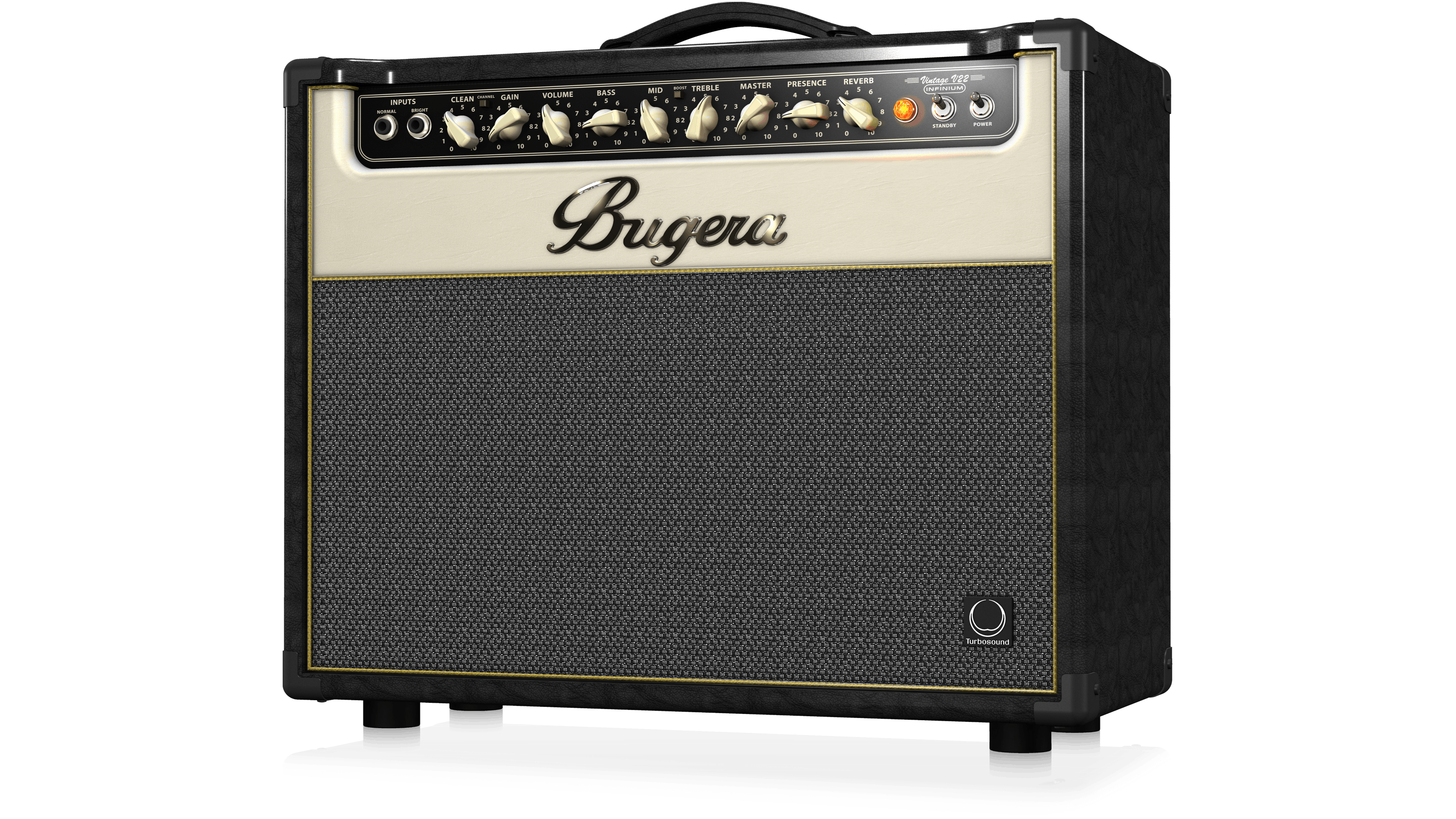
3. Bugera V22 Infinium
Our expert review:
Specifications
Reasons to buy
Reasons to avoid
Getting a 22-watt tube amp at this price hardly seems believable, but Bugera has really knocked it out of the park with the V22 Infinium. Packing a pair of EL84 power tubes with three 12AX7 preamp tubes you get a boutique tone on a budget.
The V22 Infinium offers two channels, clean and dirty, as well as two inputs for regular and bright voicings. The clean channel is clear and crisp whilst the dirty side benefits hugely from the presence control, really letting you push it into the sweet spot of tube breakup.
On the back panel, you’ve got an FX loop for running your time-based effects as well as an impedance switch for connecting to external cabinets. This means you can beef up the power whenever you need it, using the V22 as an amplifier head.
Best solid state

4. Peavey Bandit 112
Our expert review:
Specifications
Reasons to buy
Reasons to avoid
Peavey Bandit amps have long been famous for their reliability, with many owners reporting them lasting decades thanks to their outstanding build quality. This modern iteration feels just as rugged and reliable, as well as delivering a more modern feature set.
The clean channel is nice and neutral, taking various fuzz and drive pedals very well. The gain channel offers plenty of versatility too, with a voicing switch for classic, modern, and high gain taking care of any style you can throw at it.
Interestingly the onboard boost is on a rotary control rather than a switch, allowing you to dial in the perfect amount of extra juice. A power attenuation switch lets you drop the wattage to 50 or 25 percent, making it great for practicing at home.
Best pedal platform

5. Blackstar Debut 50R
Our expert review:
Specifications
Reasons to buy
Reasons to avoid
Blackstar is at it again, releasing a no-nonsense, affordable solid-state which is one of the best pedal platforms under $500. The Debut 50R isn’t for the guitarist looking for heaps of in-built effects; on the contrary, it’s perfect for those who prefer using their own stompbox effects.
Inspired by the no-nonsense approach of tube amplifiers, the Debut 50R will give you an incredibly clean base on which to build. It’s articulate, has plenty of volume, and is impressively dynamic for a solid-state amplifier. The dirt channel isn’t bad either, perhaps due to the MOSFET preamp resulting in a surprisingly warm overdrive which gives tube amps a run for their money.
The 50 watts of output gets loud, however, it does have a 5-watt option, making it ideal if you’re practicing late at night. The speaker-emulated line output will give you noise-free recording and we’re thankful for the 3-band EQ to further complement Blackstar’s ISF technology. So, if you’re after a hassle-free, affordable amplifier that complements pedals perfectly, the Debut 50R is the choice for you.
Best for practice

6. Yamaha THR10IIW
Our expert review:
Specifications
Reasons to buy
Reasons to avoid
The Yamaha THR10IIW offers a powerful solution for practicing and recording at home. Its small size combined with a versatile suite of effects and connectivity options makes it a great number two amp for seasoned guitarists, or a way for new players to explore a variety of sounds.
The quality and range of the sounds present are really quite impressive and despite its small size, it delivers a low end you’d expect from a bigger cabinet. There are some wonderful edge-of-breakup sounds, as well as clean and high gain tones on offer here.
The USB out allows for direct recording and you get a high-quality suite of effects that include delay, reverb, and modulation. The built-in tuner helps make this a proper all-rounder, and saveable presets let you recall your favorite tones instantly.
Best head
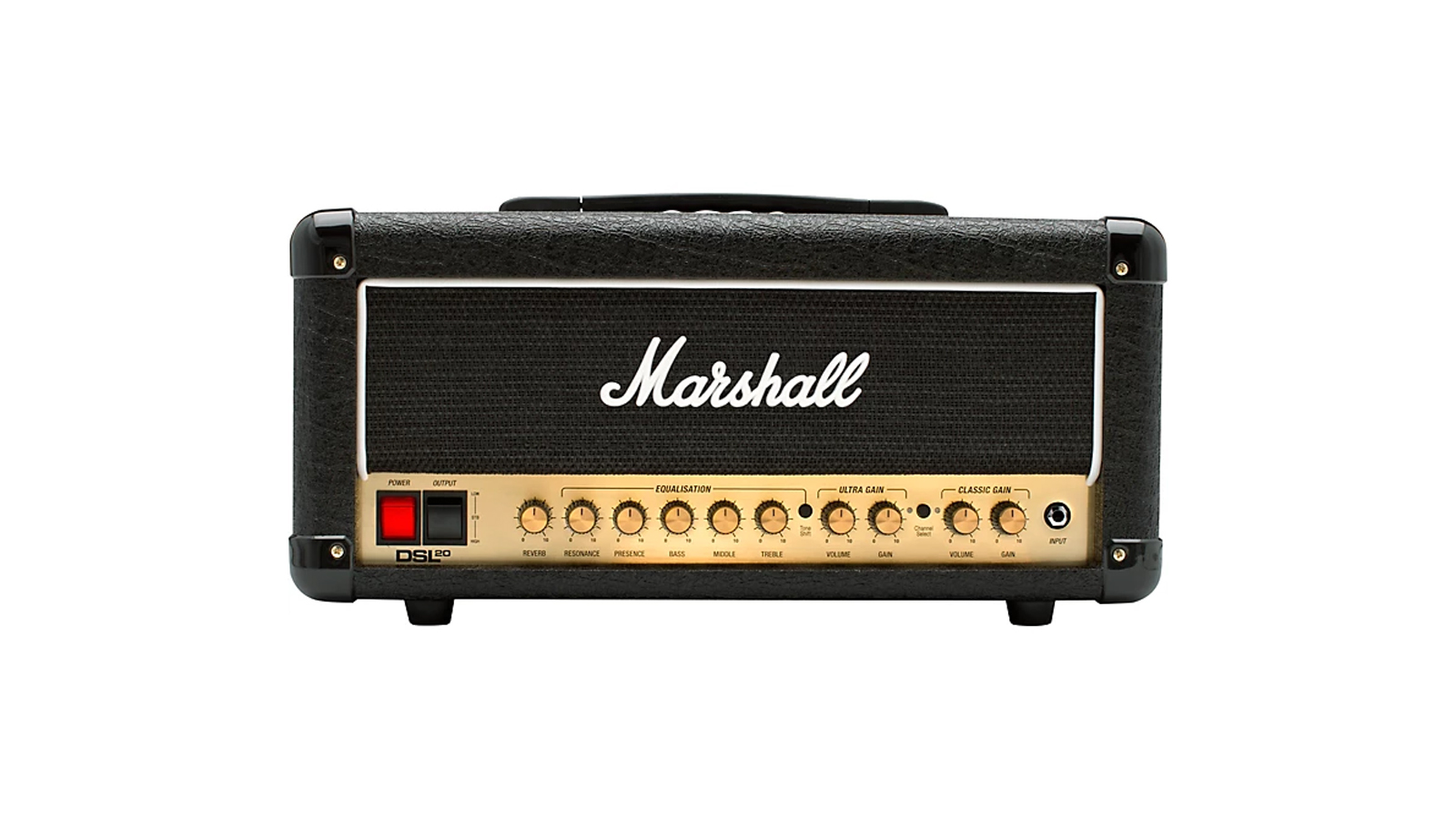
7. Marshall DSL20HR
Our expert review:
Specifications
Reasons to buy
Reasons to avoid
If you’re in the market for a guitar head under $500 that’s perfect for small pub gigs, the Marshall DSL20HR is a standout choice. With 20 watts of power, it’s ideal for smaller venues, and for home use, the built-in attenuator switch lets you dial it down to 10 watts – perfect for keeping the volume in check.
The control panel is simple yet effective, featuring built-in reverb, presence, and resonance controls for that iconic Marshall tone. While the classic channel delivers those reliable, familiar rock sounds session players trust, the ultra-gain channel brings a modern edge with biting saturation, a punchy low-end, and the ability to cut through a mix with ease.
Another key feature is its versatility, offering three cabinet options. This makes it a gigging guitarist’s dream, especially when you’re not sure what cabinet will be available at the venue. Sure, 20 watts might not cover larger gigs without being mic’d, but the DSL20HR’s portability, simplicity, and flexibility make it an affordable head that ticks a lot of boxes for players seeking tone and reliability.
More options...

8. Marshall CODE 50
Our expert review:
Specifications
Reasons to buy
Reasons to avoid
Providing players with a plethora of sounds and effects, the Marshall Code 50 is an impeccably versatile modeling amplifier. Developed alongside tone scientists Softube, the amp tones here are as close to the real deal as you can get.
All the classic Marshall tones are present and accounted for, with staples like the Super Lead, JCM800, and the JTM45 painstakingly recreated. It’s not just British amps either, there are recreations of classic American amps too, ensuring you have all your bases covered.
The USB interface allows you to record these classic tones straight into your DAW, with 24 built-in effects for accentuating your sound. With everything from delay to modulation covered, this amp does a lot of different sounds extremely well.

9. Fender Mustang GTX 100
Our expert review:
Specifications
Reasons to buy
Reasons to avoid
The Fender Mustang GTX100 offers players pretty much any amp tone they could want, from Twin Reverb to ‘59 Bassman. It’s not just Fender tones either, there are Orange and Marshall emulations too.
The amp tones are very convincing, with the Twin Reverb emulation giving you loads of power and clarity. Once you get past the Fender stable of amps there are some great British-flavored drive tones and an AC30 emulation that is done really well.
You also get a whole suite of Fender-designed effects, from swirls of reverb and delay to pitch shifting, giving you plenty to get creative with. The stereo line out and FX loop give you a lot of scope for recording or integrating your existing pedalboard.
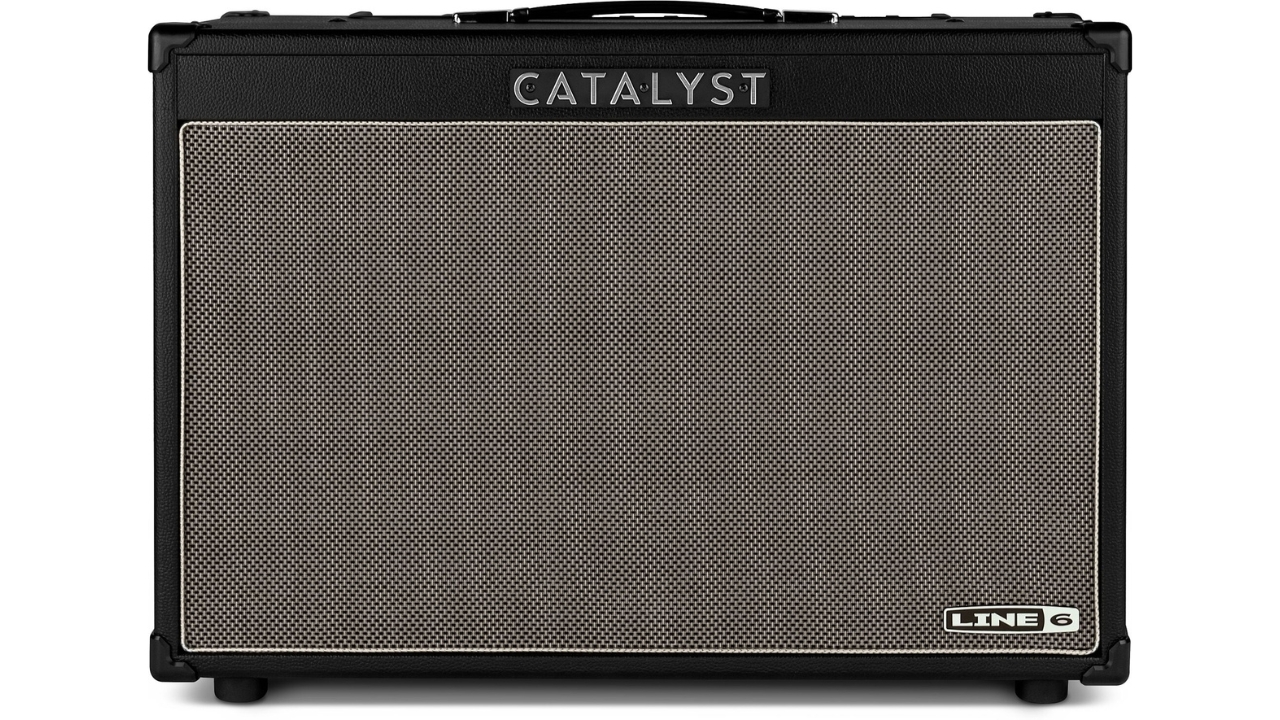
10. Line 6 Catalyst CX 200
Our expert review:
Specifications
Reasons to buy
Reasons to avoid
The Line 6 Catalyst CX 200 is a tempting option for players who want a wide variety of electric guitar tones, amps and effects. Widely credited as being the inventors of the modeling amp, Line 6’s latest offering borrows technology utilized in its highly applauded Helix modeling series.
There are now 12 amp voices on offer, which has been doubled from the Catalyst's first iteration, with everything from boutique cleans to a high-gain sonic assault. The amp tones capture the response and feel of a valve amp really well, particularly on the Boutique amp setting, which we found incredibly pleasing.
The visual side of things has also been refreshed with a brighter grille cloth and piping, and there’s a much more ‘boutique’ look, which will please those who like tradition. The effects suite comes from the HX range of Line 6’s effects, delivering everything from guitar synth to swathes of reverb and delay. Two channels let you save your settings and you can dive much deeper with the included Catalyst Edit app.

11. Fender Acoustic 100
Our expert review:
Specifications
Reasons to buy
Reasons to avoid
You didn’t think we’d forgotten acoustic players, did you? How could we when Fender is offering 100 watts of natural acoustic tone for under $500? The Acoustic 100 is by far the best acoustic amplifier option and Fender has implemented plenty of great features suitable for the modern player.
Starting off with the eight onboard effects, everything from room reverb to vibratone is covered here, all of which are available on both channels. Each channel is accessible through two combination jacks, allowing for either XLR or ¼-inch jack connections, making this a versatile open-mic companion. There’s even built-in Bluetooth, allowing the amp to double up as a music speaker if you so desire.
If open mic nights or coffee shop gigs are your thing, then the salon-style plywood cabinet and brown grille cloth will fit right in. There’s an additional footswitch option that allows you to control the effects whilst performing and its lightweight, sleek design makes it not just a feasible option, but the ideal option for solo acoustic performances.
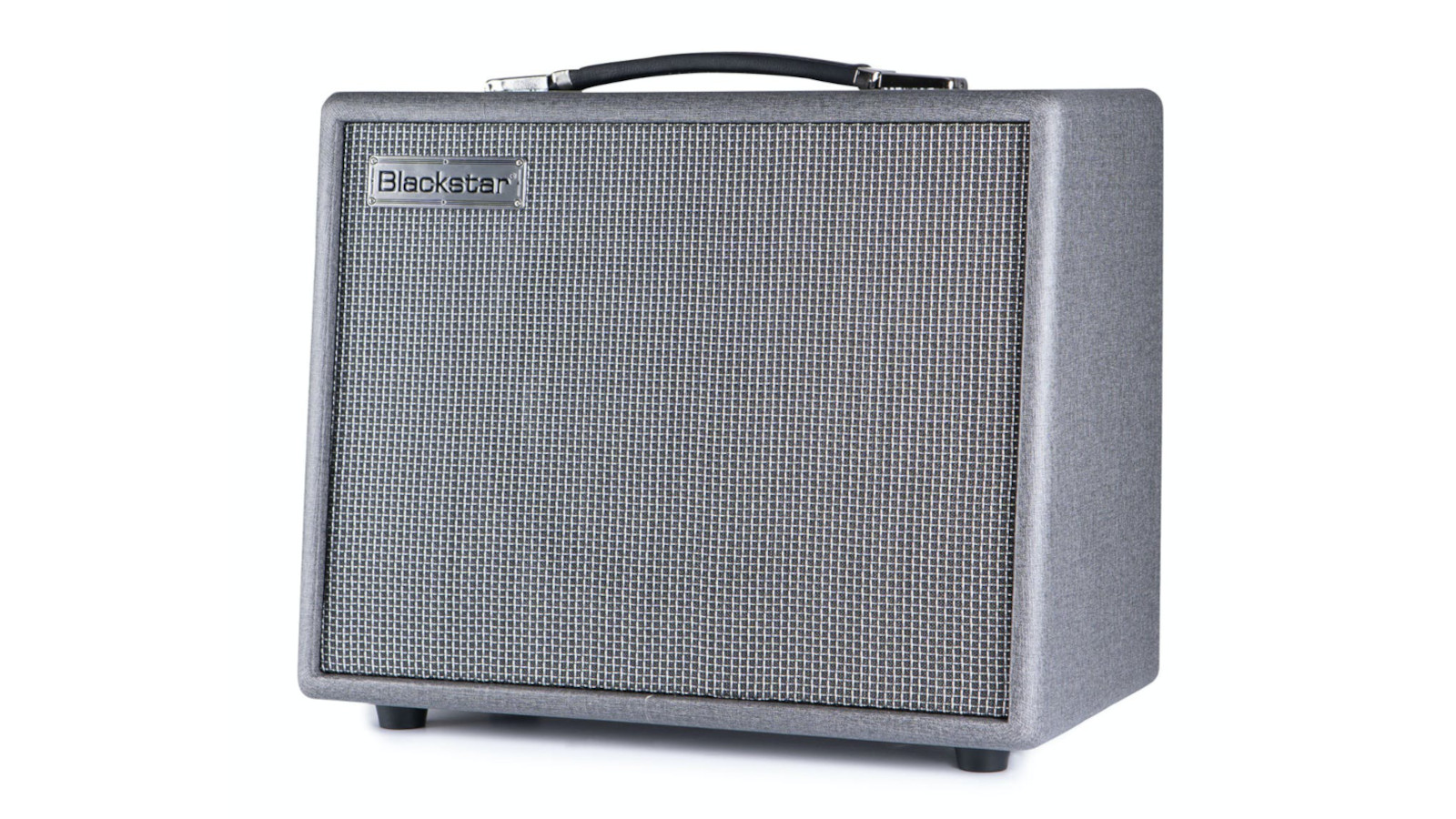
12. Blackstar Silverline Standard
Our expert review:
Specifications
Reasons to buy
Reasons to avoid
The Blackstar Silverline Standard gives plenty of tonal variety with six amplifier tones and a full complement of effects. Housed in a gorgeous silver cabinet, it’s got enough power for gigs with great connectivity for home recording purposes.
The combination of six different amplifier tones with Blackstar’s ISF feature really lets you capture a huge array of sounds. Whether you want an AC30-like chime or the heft and grunt of a 6L6-style amp, pretty much any tone is within grasp here.
20 watts offers plenty of power for competing with a heavy-handed drummer, but you’ll probably need more for bigger gigs. The USB out for recording offers an excellent way to capture your ideas on the fly, making this amp a versatile companion.
FAQs

Are solid state amps better than tube?
First up, solid-state or tube? We’re not going to tell you what’s better, it’s like a Strat versus a Les Paul – it all comes down to personal taste. However, a 120-watt tube amp will be a huge amount more expensive than its solid-state equivalent, so if volume is your goal, then the solid-state might be the way to go for the guitarist on a budget.
What should you look for in an amp?
The feature set of the amp is also of critical importance. Are you planning on practicing or recording at home? Then power attenuation is key if you must have a tube amp, allowing you to get that sought-after tube tone at an acceptable volume.
Solid-state amps often have much more built-in, such as different amp models and effects, so if variety is the spice of your life you’ll definitely need to consider this. Headphone-outs are pretty rare on tube amps, so silent practice is pretty much a no-go. They’re much more readily available on solid-state amps however, alongside direct-outs for silent recording, another feature that might be useful if you have close neighbors or you don’t want to annoy the family or wake up your youngest.
How much does a guitar amplifier weigh?
If you’re going to be traveling to and from gigs and rehearsals, lugging that tube 2x12 around will get old quickly. Solid-state amps for the most part are pretty lightweight, which you’ll be thankful for when you encounter three flights of narrow stairs at your local venue. That said, there is a great selection of small tube amps that will compete with higher-wattage solid-state amps in terms of pure volume, and small tube combos are all the rage right now for touring musicians, where for the most part guitar amplifiers are mic’d up for live use.
Do affordable amps sound good?
You may be thinking of your first-ever affordable amplifier, likely a beaten-up tiny square of shrill noise. However, affordable amps have come a long way. Thanks to technological advancements, heritage brands like Fender and Marshall have been diversifying their range to include fantastic inexpensive options for beginners and professionals alike. You just have to check out an amp like the Marshall CODE 50 or Fender Mustang GTX 100 to see how far solid-state technology has come, clearly showing these iconic companies' commitment to producing affordable, great sound amplification.
Newer kids on the block like Blackstar and Boss are also making big waves. An amp like the Boss Katana is choc-a-bloc with features, effects and tones that amps of yesteryear can only dream of. Affordable amps of today can even double up as an audio interface or allow you deep, hands-on tone editing through proprietary smart apps.
However, it’s not just solid-state amps, the Bugera V22 Infinium is an all-tube combo that will get you that sought-after tube tone on a budget. A 22-watt tube combo powered by a pair of EL84 tubes and three 12AX7 tubes for under $500? C’mon, what’s not to love about affordable amps?
What are the best affordable amp brands?
The answer to this question will depend on your preference in tone, as each amplifier brand has its own sound and style. However, it’s difficult to look past Blackstar. The UK company has been featured three times on our list and is always committed to providing players with feature-heavy, great-sounding amplification. No matter your style, Blackstar is likely to have an amplifier for you.
Boss is also worth mentioning, and its Katana amplifiers have topped best-selling lists since its initial release in 2016. Boss has used its effects pedal experience when designing the Katana and implemented some of their most famous stomp-box effects as a blueprint for the Katana’s in-built effects. Most Katana models also feature an attenuator that can drop the output to 0.1 watts, meaning the 100-watt 2x12 is as equally useful in the bedroom as it is on the stage.
Lastly, how can we not mention Fender? The Californian giant initially started as an amplification company and its continued endeavor to populate the market has also seen great entries in the affordable range. The Mustang GTX100 is a lightweight monster that offers all of Fender’s perennial favorite tones from some of the most famous amps in history.
What size amp do I need for gigging?
Traditionally, guitarists prefer tube amplifiers for gigging due to their responsiveness, dynamics, and volume. However, the relationship between power ratings and amp sizes can often confuse beginners – for example, a 5-watt tube amp can easily be louder than a 30-watt solid-state amp. So, how much power do you really need?
If you’re planning to play shows alongside a drummer, we recommend a minimum of 10 watts for a tube amplifier. Anything less will struggle to keep up, and with minimal headroom, the tubes will start to overdrive as you crank the gain and volume. Personally, I find a 15-watt tube amp to be the sweet spot, offering enough power to deliver clean tones with plenty of headroom while still packing enough punch when pushed.
How we test
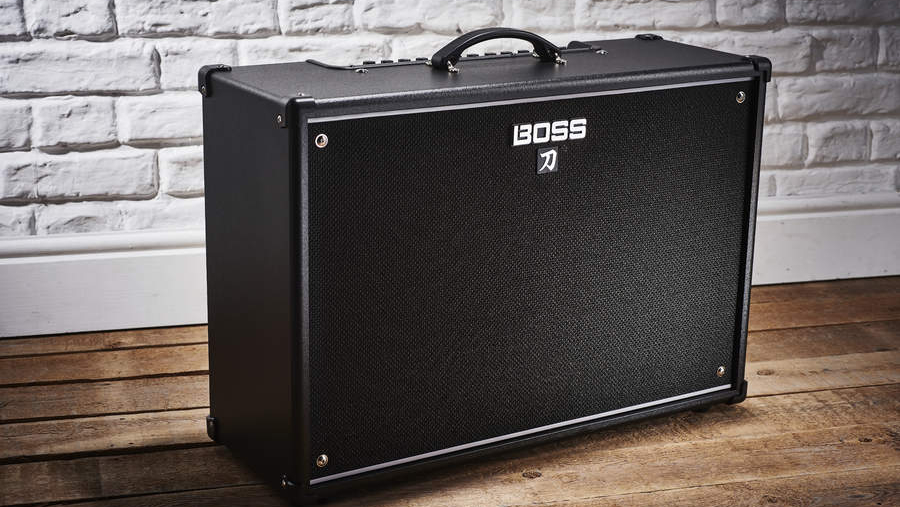
At Guitar Player, our team features many experienced guitarists who've been there, done that, and got the t-shirt. We pride ourselves on our guitar knowledge, and we've been playing guitar amps with collected decades' worth of experience.
When we test a guitar amp we'll take a methodical approach, starting with assessing the specifications and features of the amp in question. Here, we'll be looking to determine who the intended audience is, whether it's an amp for a bedroom guitarist or for a regularly touring one. We'll check out the inputs, outputs, controls, speaker, and if applicable, what kind of tubes it has. Doing this informs the rest of the testing process, as you wouldn't ask the same thing of a bedroom amp as you would a touring grade one.
Next we'll plug it in and get to playing. Here we're looking at both the usability of the amplifier and the sound. We want to determine how easy it is to get a good sound out of it, how flexible the controls are. We'll start with a neutral EQ before we start tweaking the sounds, checking to see how each control responds and its effect on the overall tone.
Our sound testing might take place at home, or we may take it to a rehearsal space if we're really cranking it. Many times we'll use it as part of a live show to see how the amp performs in that scenario. When testing sound we'll be using our years of experience to judge the quality, where it sits in the spectrum of EQ, how the different channels respond if it has that. We'll test any onboard effects too, like reverbs and delays, making a note of how they perform.
In all our tests we'll try and take as much time as possible with the product. Living with an amp and using it every day helps us inform our reviews better, as getting over the honeymoon phase of getting a new piece of gear is very important.
Read more on how we test gear and services at Guitar Player.
Related buyer's guides
You can trust Guitar Player.
- On a budget? Here's our list of the best electrics under $1,000
- Save cash on the best electric guitars under $500
- Unplug with our pick of the best acoustic guitars
- Check out our pick of the best Epiphone Les Pauls
- Take your playing to new heights with the best online guitar lessons
All the latest guitar news, interviews, lessons, reviews, deals and more, direct to your inbox!

Matt is a Junior Deals Writer here at Guitar Player. He regularly tests and reviews music gear with a focus on guitars, amps, pedals, modelers, and pretty much anything else guitar-related. Matt worked in music retail for 5 years at Dawsons Music and Northwest Guitars and has written for many music sites including MusicRadar, Guitar World, Guitar.com, Ultimate Guitar, and Thomann’s t.blog. A regularly gigging guitarist with over 20 years of experience playing live, writing, and recording in bands, he's performed everything from jazz to djent, gigging all over the UK in more dingy venues than you can shake a drop-tuned guitar at.
